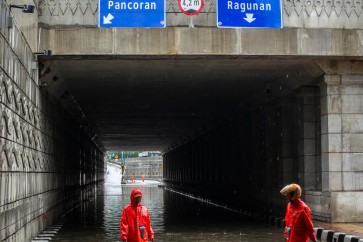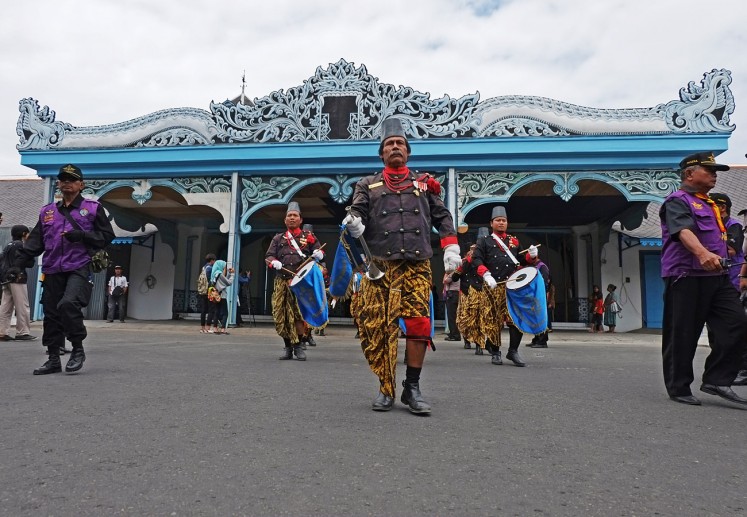Center recovers Ganesha statue
The Mpu Purwa Historical Object Preservation Center in Malang, East Java, has recovered a 12th-century stone statue of Ganesha, believed to be the only one of its kind in Indonesia
Change text size
Gift Premium Articles
to Anyone

T
he Mpu Purwa Historical Object Preservation Center in Malang, East Java, has recovered a 12th-century stone statue of Ganesha, believed to be the only one of its kind in Indonesia. It features a special trait not found on other Ganesha statues in Indonesia - the elephant-headed deity is seen riding atop a mouse.
"The mouse is apparently included as an animal used by Ganesha as a vehicle, but this type of statue has never been found in Indonesia before. Ganesha is usually seen riding the Lembu Nandhini cow, the Jatayu bird, or the Padmasana lotus," Malang archeologist Suwardono said Tuesday.
Other singularities of this statue, recently handed over by a private collector, include Ganesha's stiff facial expression and a badhong carving on the shoulders. The decorations worn by the god, also called samboghakaya, are also more lavish.
"The badhong strand is part of the special trait of statues inherited from the Kediri empire, from the Raja Baneswara to Kertajaya kingdoms. The most special trait is the mouse as a vehicle on the pedestal of the statue," Suwardono said.
Suwardono, a graduate of Malang State University, said he had cross-checked the statue with the National Archeology Research and Development Center in Jakarta, the Trowulan Center for Archeological Conservation and Heritage in Mojokerto, and the Archeological Center in Yogyakarta, the results of which confirmed the statue was a one-of-a-kind that had never been seen before.
The epigraphist and iconographer explained that the 40- by 22- by 22-centimeter statue, intended to be placed in temples, originated in northern India and gradually spread further southward.
The statue is usually placed at the back of a temple for worship. It functions as a balance and a guardian for unsafe areas and is related to worship to ward off disaster.
The statue was obtained from a collector named Jayusman, a resident of Jl. Sambas in Malang. Jayusman said he had obtained the statue from a Chinese-Indonesian collector a long time ago.
Saying he feared being prosecuted for possessing the statue, Jayusman requested help from Suwardono in handing over the statue to the government. Suwardono found the special traits after analyzing the statue for the past two weeks.
He said many individuals in the greater Malang area possessed precious historical objects, but the government could not afford to preserve them all due to limited funds.
He cited a star-rated hotel in the city that owned the Prasasti Widodaren, a plaque depicting a retreat location on the slopes of Mount Semeru and a plaque with inscriptions from the Maja-pahit empire.
"They also have the Adi Karanandhi statue - a human with the head of a cow. This statue is also believed to be the only one in the country," Suwardono said.
At the end of last year, the Mpu Purwa Historical Object Preservation Center also recovered a Singasari kingdom-era statue of the god Brahma. The 159-centimeter-tall statue, carved from andesite rock, was owned by a small hotel in Malang and was used as its mascot.









